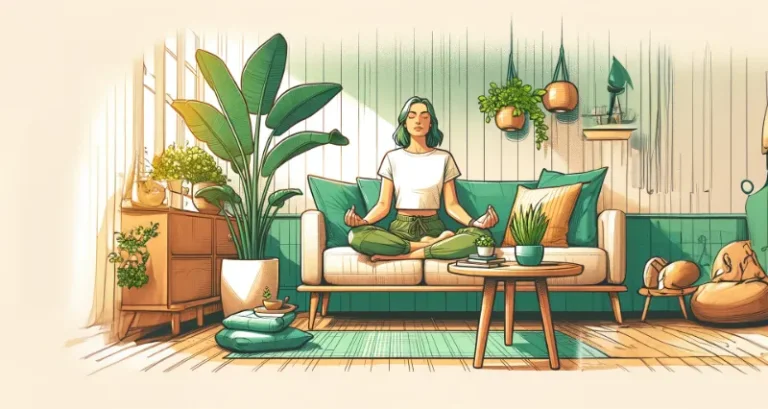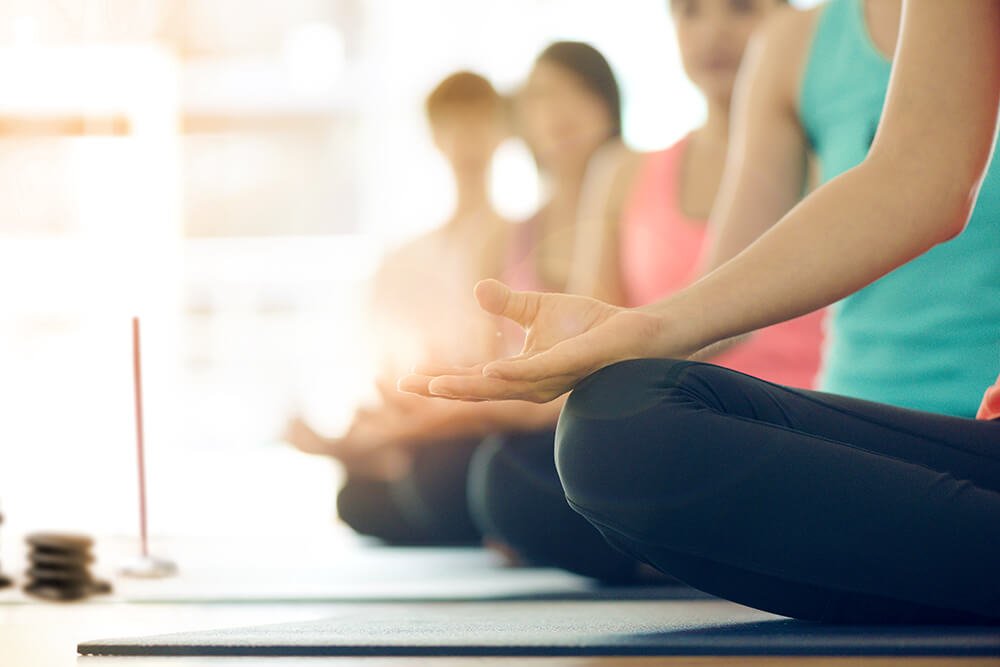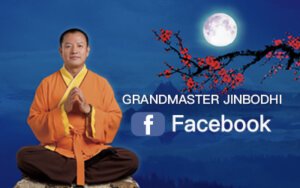Easy-to-Learn Meditation Methods | The Do’s and Don’ts of Meditation

Sitting meditation is a self-cultivation method that has been around for thousands of years. Regularly practicing sitting meditation can calm the body and mind, prevent disease, improve health, develop wisdom, and stimulate inner potential. From ancient times to the present, sitting meditation has been loved by people from all walks of life. Not only is it a key to longevity, it is also a path to spiritual realization. Want to learn sitting meditation? Bodhi Meditation will help you understand the do’s and don’ts of sitting meditation and start a safe journey of self-cultivation.
Sitting Meditation for a Healthy Body and Peaceful Mind
In recent years, scientific research has confirmed the benefits of sitting meditation. A researcher at the Harvard-affiliated Benson-Henry Institute found that mediation can help with high blood pressure. As well, with meditation, blood pressure can reduce to the point where blood pressure meditation is reduced or even eliminated. [1] A study from the University of Wisconsin-Madison found that adults who practice meditation suffer less from seasonal colds and flus. Those participants who meditated missed 76 percent fewer days of work from September to May. [2]
Researchers from John Hopkins University reviewed 47 meditation studies. Their findings suggest that meditation can help ease psychological stresses such as anxiety, depression and pain. One of the studies found that meditation helped reduce symptoms in people who suffered with generalized anxiety disorder, a condition marked by worries, poor sleep and irritability. [3] According to a study conducted by MIT and Harvard, people who meditate change the size and speed of their alpha waves. These findings suggest that pain sufferers who meditate are able to “turn down the volume on pain signals” and are therefore not as reactive to the pain. [4]
Due to the many benefits of meditation, numerous well-known successful people in a variety of fields practice meditation to improve work efficiency and stimulate creativity. Many schools in Europe and the United States have set up meditation courses to improve concentration and efficiency. Some medical institutions have even begun to guide patients to use meditation to relieve pain and strengthen immunity. The age-old practice of meditation has become a new trend for maintaining health.
Introduction to sitting-meditation postures|Choosing the right posture for you
When practicing sitting meditation, it is recommended to choose a suitable posture according to your situation. The following is a list of common postures.
Common Sitting Positions 1: Cross-Legged
The cross-legged posture has three variations:
- Normal Cross-Legged: Sit naturally with legs crossed. This is the simplest and most relaxing posture commonly used by beginners.
- Half-Lotus Position: Sit with legs crossed. Place one foot on top of the opposite thigh. This posture is a little more difficult than the first one.
- Lotus Position: Sitting cross-legged, place each foot on top of the opposite thigh. This posture tests the flexibility of the body and is beneficial for maintaining stability during practice. It can help the meditator to enter the state of calmness. This is an ideal posture for meditation.
Common Meditation Posture 2: Sitting on a Chair
For beginners in sitting meditation, if you cannot sit cross-legged at first, you can choose to sit on a chair and change to sitting cross-legged when your physical condition permits.
Five Common Physical Reactions to Sitting Meditation

In the early stages of learning meditation, people will encounter some common problems. Some issues are normal reactions to meditation; other problems may result from external factors. In the next section, we will introduce you to five common situations in meditation.
- Sweating and feeling hot during meditation
When sitting in meditation, people are in a relaxed and purified state with fewer distracting thoughts. Therefore, it is easier for them to connect with the natural energy of the Universe and replenish their own vital energy. When the energy within our body increases, feeling hot and sweating are common phenomena that can expel toxins from the body.
- Soreness, numbness, pain, and itching
During sitting meditation, the energy obtained will help the body clear the meridians and remove blockages. This process will create several natural reactions such as soreness, swelling, numbness, pain, and itching. When these reactions occur, try not to scratch or pat the affected area. It is best to just ignore it; after a while, reactions will fade away.
- Yawns and tears
Some people will yawn, tear up, and even experience a runny nose during sitting meditation because all the negative emotions or diseases accumulated in the body are discharged through tears, nasal mucus, etc. These are normal reactions to the effects of meditation.
- Dizziness and nausea from visualization
If you feel dizzy, stuffy or drowsy during meditation, it may be the result of high temperature or poor air circulation in the room. We recommend that you adjust the indoor temperature and ensure quality air circulation to create a relatively cool and fresh meditation environment before beginning your practice session.
- Moving the body while practicing sitting meditation
If you follow the correct way to meditate, your body and mind will become more and more stable and calm. If your body is involuntarily swaying or shaking during practice, it may be because you are using an improper method. In the event that you experience involuntary movement, open your eyes and remind yourself to relax and concentrate. You may wish to seek professional guidance at a formal meditation center.
What Are the Don’ts in Sitting Meditation?
Avoid three situations to improve the effects of meditation
Sitting meditation is the act of purifying the body and mind. If you want to get good results, you must try to avoid factors that interfere with meditation. The following basic meditation don’ts are worth noting:
1: Emotional instability
Do not meditate during mood swings. One reason is that it will be difficult to stay calm, and the other reason is that deliberately suppressing your emotions through meditation is not good for your health. You can meditate when your emotions are more stable.
2: Being too hungry or full
Hunger makes people feel weak and flustered, while being overly full will increase the burden on the stomach and intestines. These two conditions are not conducive to meditation. It is usually better to eat until you are only 70 to 80 percent full before meditation and meditate an hour after a meal.
3: Uncomfortable clothing
Wearing overly fitted clothing with a rough texture and a tight waistband will significantly impede a positive meditation experience. Wearing loose and comfortable clothes with a relaxed waistband can help calm the body and support you in entering a meditative state.
Come to Bodhi Meditation for Sitting Practice
Professional meditation guidance will help you cultivate body and mind
A powerful method for cultivating health, sitting meditation is becoming popular among people from all walks of life. Although many beginners are keen on meditation, many do not know much about it, which greatly reduces the effects of their practice. You won’t be able to achieve true self-cultivation and nourishment with the wrong method. When you are starting out, it is especially important to seek professional meditation guidance.
Bodhi Meditation is an international meditation organization founded by Grandmaster JinBodhi. Focused on traditional meditation practices, the organization introduces easy-to-learn, simple-to-practice and effective meditation methods that are especially suitable for modern people. These practices include The Meditation of Purity and The Meditation of Bone Melting, which help the meditator to reach a state of compassion and purity by guiding them to visualize with ease.
People who want to learn sitting meditation can get comprehensive guidance and teaching through Bodhi Meditation. The contact information is as follows:
Online: Follow Grandmaster JinBodhi’s Facebook page and Grandmaster JinBodhi’s YouTube channel to watch relevant teaching videos, get the latest updates, and participate in online courses.
Offline: Sign up for courses at local Bodhi Meditation Centers around the world, receive professional guidance, and experience the beauty of meditation.
The following testimonials are from Bodhi Meditation students:
Mashu|San Francisco, USA
While practicing The Meditation of Purity, I entered a wondrous state. I felt that I had completely become one with the blue sky and the Universe. Suddenly, my view of many aspects of life broadened, as I was looking through an enlightened perspective.
Pingman|Los Angeles, USA
After taking a Bodhi Meditation course, I found that the skin on my face had become smoother, the spots had faded, and even my nose, which had been pitted, had smoothened.
Shan Ren|Taichung, Taiwan
I often vomited during meditation class, as if my body wanted to expel toxins. After I completed a retreat, my body became more supple than ever before.
Shita|Singapore
After 12 days of meditation classes, I was pleasantly surprised to find that I could sit cross-legged and my years of lower-back pain and frozen shoulders were history!
Related articles:
Learn Sitting Meditation the Easy Way: Tap Into the Benefits With Professional Guidance
A Guide to Meditation for Beginners: Simple practices for physical and mental health
References:
[2] https://www.scientificamerican.com/article/meditate-that-cold-away/

